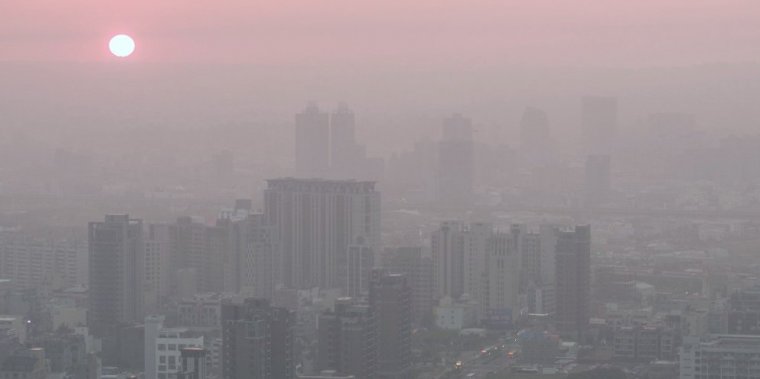| News / World News |
A few hours of spiking air pollution ‘raises death risk’
More than a million people die every year due to short-term exposure to high levels of air pollution, researchers say, with Asia accounting for almost two thirds of all deaths.

Air pollution in Taiwan. Breathing in tiny particles in the air for even a few hours, and up to a few days, has resulted in more than 1 million premature deaths a year, researchers say. Photo: 君勇 林
The researchers found that breathing in tiny particles in the air for even a few hours, and up to a few days, resulted in more than 1 million premature deaths a year.
The majority of these were in Asia and Africa, and more than a fifth (23 per cent) occurred in urban areas.
Overall, the WHO estimates that 7 million people a year die prematurely as a result of air pollution exposure, representing one in eight deaths globally. Low-and-middle income countries carry most of this burden.
Previous studies have focused on health impacts of long-term exposure to pollution in cities, ignoring the frequent “spikes” in pollution from fires, dust, and other irregular extreme air pollution events in smaller urban areas.
However, the researchers, from the School of Public Health and Preventive Medicine at Monash University, in Melbourne, Australia, looked specifically at the mortality burden associated with short-term exposure to ultra-small particulates known as PM2.5 in over 13,000 cities and towns worldwide between 2000 and 2019.
Yuming Guo, professor of global environmental health and health biostatistics at Monash University, who led the latest study, told: “Unlike previous studies that primarily concentrate on long-term exposure (annual averages), our research sheds light on the immediate impacts of daily fluctuations in air pollution.
“This highlights a crucial oversight in earlier assessments, which underestimated the mortality burden linked to PM2.5 by approximately 1 million deaths.”
According to the study, Asia accounted for around 65 per cent of global mortality due to short-term PM2.5 exposure, Africa 17 per cent, Europe 12 per cent, and the Americas six per cent.
The mortality burden was highest in crowded, highly polluted areas in eastern Asia, southern Asia, and western Africa with the fraction of deaths attributable to short-term PM2.5 exposure in eastern Asia more than 50 per cent higher than the global average, according to the data.
The researchers estimated daily PM2.5 concentrations on a global scale. They then integrated this air pollution data with population density, mortality rates, and the relative risk of mortality associated with air pollution.
“This comprehensive approach enabled us to accurately calculate the mortality burden attributable to daily air pollution,” said Guo, who is also head of the Monash Climate, Air Quality Research unit.
“Our findings allowed us to summarise the estimates at various scales, including global, regional, national, and urban areas,” he said.
Guo added that the severity of air pollution in Asia and Africa is compounded by their population density.
“The convergence of these two factors amplifies the health risks, resulting in a more pronounced health problem within these areas,” he explained.
Direct measures to reduce air pollution are imperative. However, mitigating the health impacts of existing pollution is also crucial, the researchers argue.
In mitigating the health impacts of air pollution, the researchers say several strategies are effective—including limiting outdoor activities during periods of high pollution, utilising air purifiers indoors, and wearing appropriate face masks when outdoors. (SciDev.Net)
YOU MAY ALSO LIKE





